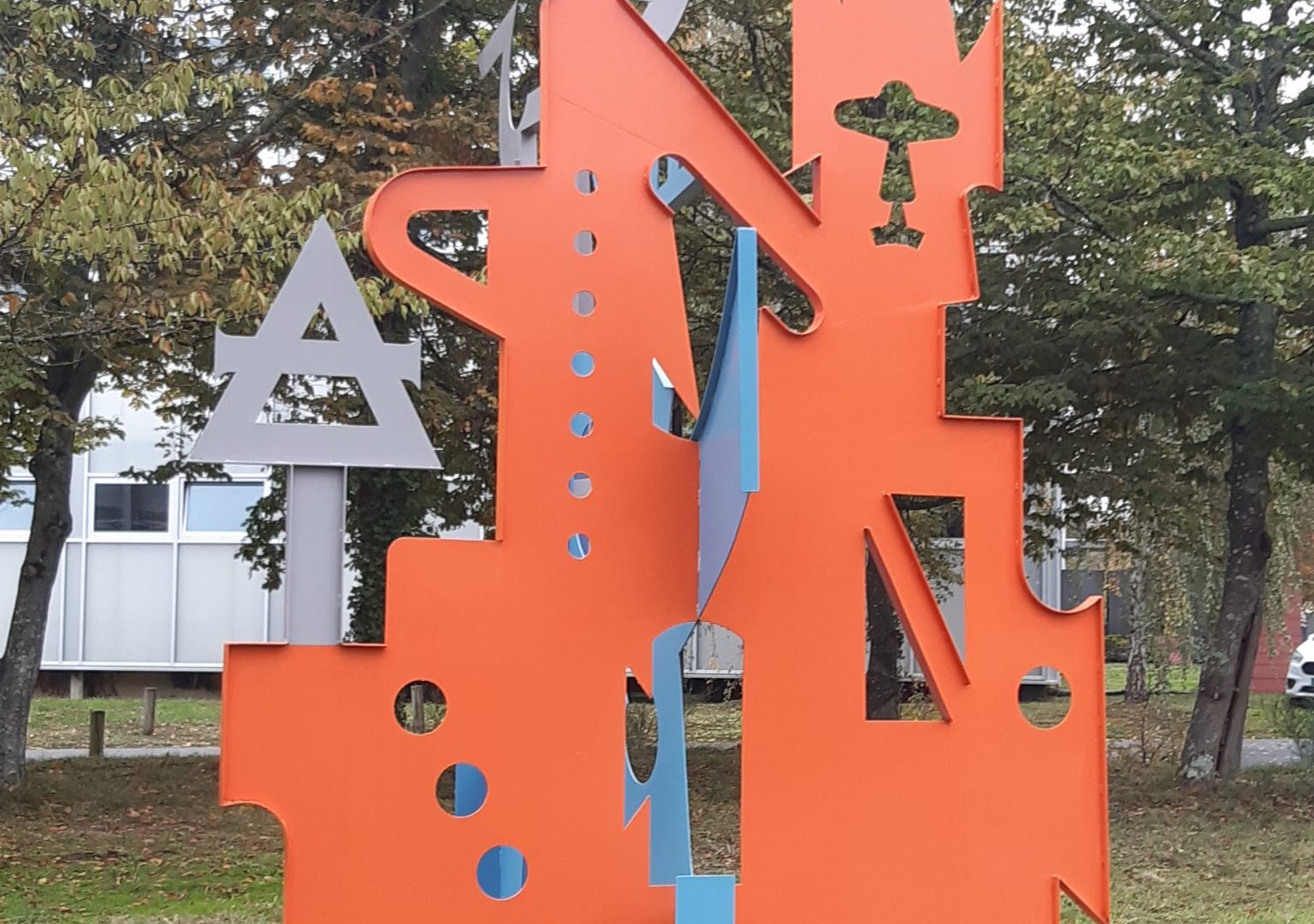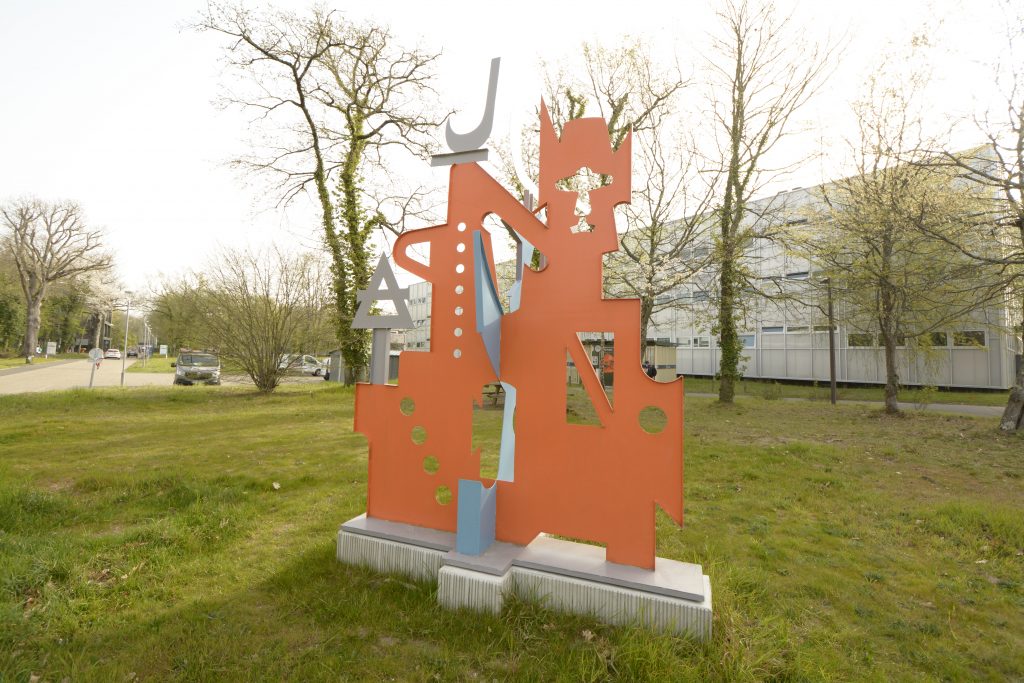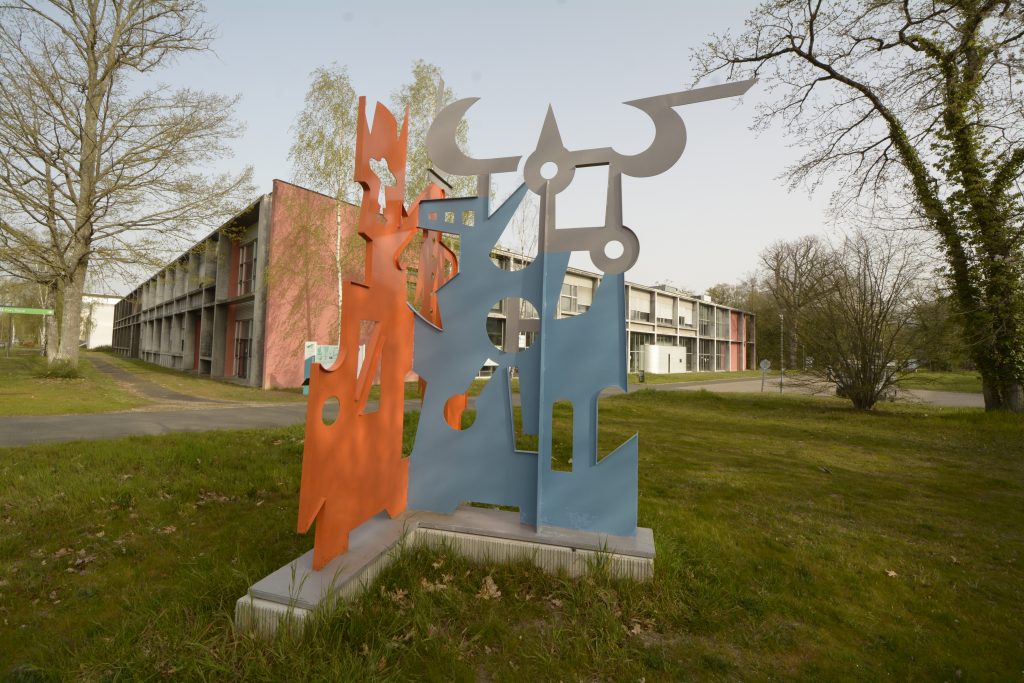Completed in 1978 by Roger Toulouse (1918-1994), a famous artist from Orléans, this sculpture was originally intended for the Antoine Lavoisier school group from Orléans-La Source as part of the 1% Artistic program. In 2020 after several unfortunate events, the sculpture joined the 1% Artistic program of Orléans’ campus and placed at the front of the physics-chemistry buildings.
Presentation of the work and reflection of the artist
3.70 meters high in total, the sculpture is made up of two steel panels assembled perpendicularly and cut into geometric shapes. One of them, painted in red, represents fire and the chemist Lavoisier, whose head is recognizable by the distinctive facial features (eyes, nose, mouth, ears). The other one, painted in blue, represents copper sulfate.
Above the upper parts, six overhanging chemical symbols, painted in dark blue (which are now grey since they were restored in the early 2000s) are distributed as follows: sulphuric acid and air on the red panel – vitriolic acid, oxides, water vapour and carbon dioxide on the blue panel.
The intent of the sculptor was to highlight the great scientific works of Antoine Laurent Lavoisier who, from 1768 on, undertook to investigate deeper the nature of the four elements considered since antiquity as bearers of a reality inaccessible to scientific analysis, earth, water, air and fire. Three of the four elements included tin the sculpture: air and water, in the state of vapor, in the form of chemical symbols – fire is symbolically translated by the color red: its importance is underlined by the dominant use of this color on one of the elements of the structure which also depicts the chemist’s silhouette.
Using chemical symbols, the sculptor represents the great progress of the scientist tackling acids, oxides and carbon dioxide. Acids are represented by vitriolic acid, according to the old nomenclature, but also according to the new nomenclature. The quotation of copper sulfate, which is symbolized by the green color – the blue we are seeing today is due to a choice made when the work was restored in the early 2000s, which is paradoxically more scientifically correct- matches the new need for a rational chemical language responding to fundamental rules. Therefore, the blue panel is entirely dedicated to the new chemical symbols – with the exception of vitriolic acid figured in the medieval alchemy style, which is also the case on the red panel for air.
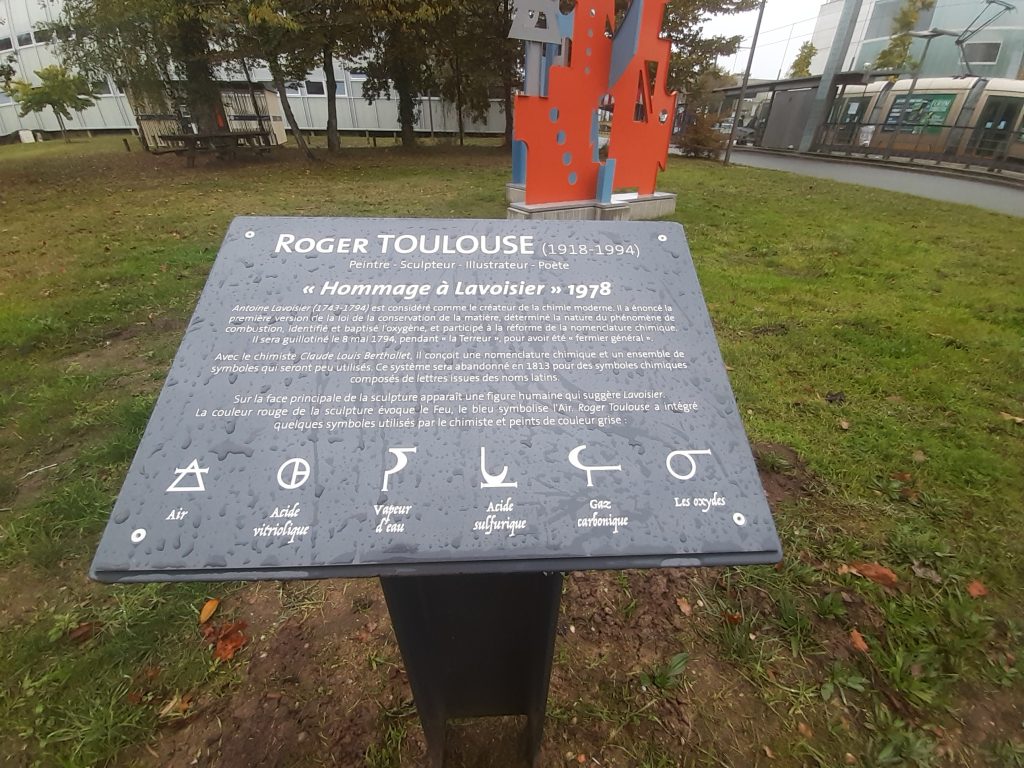
Cartel explaining the different symbols on the sculpture (2020 © Sophie Géneau de Lamarlière) 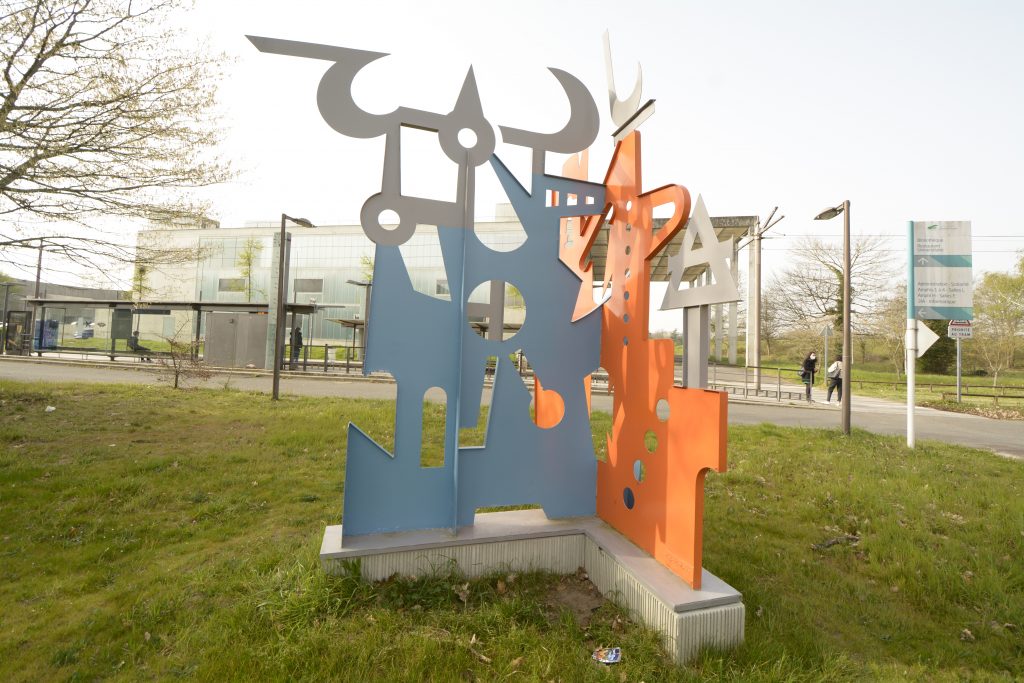
a visual allowing to identify all the elements on the sculpture (2021 © Florent Bourget
A sculpture with multiple adventures
The idea of the project originated from 1976, when René Thinat (1908-1978) – Orléans’ Mayor since 1971- noticed the complete absence of decorative design for the Lavoisier school group which was open since 1972. As the counterpart for a construction grant from the Préfet was to install an artistic work, he threatened to withdraw it and the City hall was bound to urgently turn to the School of Fine Arts to seek a candidate. In 1977, the first selected project was still not presented by its author, and the city council lost patience. It then decided to entrust this project to Roger Toulouse, a renowned artist who accepted the proposal. He had already carried out numerous public commissions for the city of Orleans and the towns of Loiret, and was passionate about monumental sculpture since the early 1970s, as demonstrated by this project.
The sculpture was initially intended for the Antoine Lavoisier school group of Orléans La-Source and drew criticism from the parents of the pupils from its very installation in 1978 near the nursery and primary schools. They were worried for their children because of the metal work’s angular and pointed forms, and the petitions multiplied for its withdrawal.
The sculpture was then moved to the Floral park at an unknown date, where it suffered great deterioration before it was “rediscovered” in 1989 thanks to the association of Roger Toulouse’ Friends. This association then helped the Orleans City Cultural Affairs Department, which owned the work in the framework of the 1% artistic tax, to restore it in view of a re-installation. In 2000, this project was then entrusted to Daniel Leclercq (1946-2020), an Orléans-based artist. The restauration involved much difficulty, due to the lack of sources available especially concerning the original colors. The work was finally installed in the center of the Parc Floral roundabout at the entrance to La Source, before being once again moved to the entrance to avenue Jean Zay, on the central reservation between the Orleans Theater and rue de la Manufacture. Following a deposit agreement between the town hall and the University of Orléans, the work was then set for at least the next six years within the Sciences UFR of the Faculty of Orléans, in a framework with strong scientific content, which is much more consistent with the meaning of the work.
To go further…
- What is the 1% Artistic program?
- Consult the website of Roger Toulouse’s Friends, an association that keeps the memory and work of this great artist from Orléans alive
If you see this after your page is loaded completely, leafletJS files are missing.
